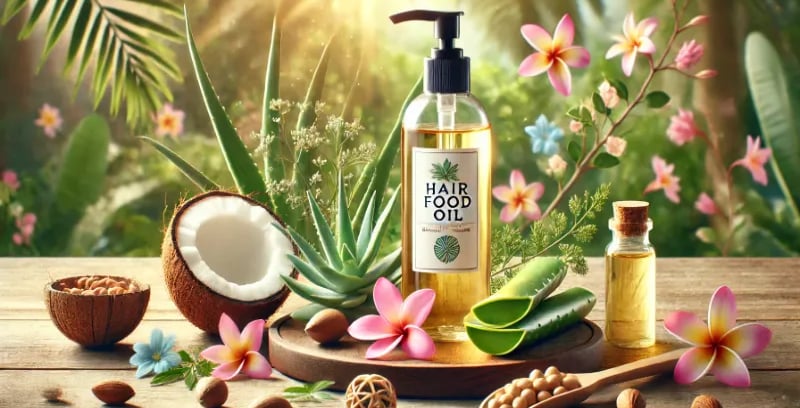Hair Food Oil: Benefits, Ingredients, and Usage Tips
Discover the benefits of hair food oil, its key ingredients, and tips for effective use. Achieve healthier, shinier, and stronger hair with this nourishing oil.
GENERAL KNOWLEDGE
1/25/20252 min read


Hair food oil is a nourishing elixir crafted to provide essential nutrients to your hair and scalp. Unlike regular oils, hair food oil is often enriched with vitamins, minerals, and plant-based extracts designed to improve hair health. It addresses common hair concerns such as dryness, breakage, and thinning, making it a versatile addition to any hair care routine.
Key Ingredients Found in Hair Food Oil
Hair food oil typically includes a blend of natural and fortified ingredients. Common components are coconut oil, olive oil, castor oil, and argan oil, which deeply moisturize and strengthen hair strands.
Essential vitamins such as biotin, vitamin E, and vitamin A are often included to promote growth and combat brittleness. Additionally, botanical extracts like aloe vera, hibiscus, and rosemary add a therapeutic touch, enhancing scalp health and reducing irritation.
How Hair Food Oil Nourishes and Strengthens Hair
Hair food oil penetrates deeply into the hair shaft and scalp, delivering much-needed hydration and nutrients. The fatty acids in the oil restore the lipid layer of the hair, reducing frizz and split ends.
Vitamins and antioxidants work synergistically to combat free radicals and repair damage caused by pollution and heat styling. Over time, hair food oil strengthens the roots, reduces breakage, and leaves the hair looking shinier and healthier.
Benefits of Regular Use of Hair Food Oil
The benefits of using hair food oil regularly are extensive. It helps to:
Stimulate hair growth by improving blood circulation to the scalp.
Reduce dandruff and scalp dryness with its moisturizing properties.
Add a natural shine and smooth texture to the hair.
Protect against environmental damage and UV exposure.
Prevent split ends and improve overall hair manageability.
For individuals with chemically treated or color-damaged hair, hair food oil can serve as a restorative treatment, replenishing lost nutrients and improving elasticity.
Tips for Using Hair Food Oil Effectively
To maximize the benefits of hair food oil, consider these tips:
Apply Generously: Use a sufficient amount to coat your hair and scalp, but avoid oversaturation.
Massage Thoroughly: Gently massage the oil into your scalp using circular motions to boost circulation.
Warm the Oil: Slightly heating the oil before application can enhance absorption.
Leave It In: Allow the oil to stay for at least 30 minutes or overnight for deeper nourishment.
Wash Properly: Use a gentle shampoo to remove excess oil without stripping moisture.
Consistency is key—incorporating this into your routine once or twice a week can yield noticeable results.
Choosing the Right Hair Food Oil for Your Hair Type
Selecting the right hair food oil depends on your specific hair needs.
For dry or curly hair, oils like coconut and argan are ideal for deep hydration.
If you’re dealing with thin or fine hair, lightweight oils like jojoba or grapeseed can provide nourishment without weighing your hair down.
For those combating dandruff, tea tree or neem-infused hair food oils are excellent choices.
Tailoring your selection ensures you achieve optimal results.
Unlocking Healthier, Stronger Hair
Hair food oil is more than just a product; it’s a comprehensive solution for achieving healthier, more vibrant hair. With its blend of nourishing ingredients and multifaceted benefits, it caters to a variety of hair concerns.
By integrating it into your hair care regimen and selecting the right type for your needs, you can unlock the secret to stronger, shinier, and more resilient hair.
